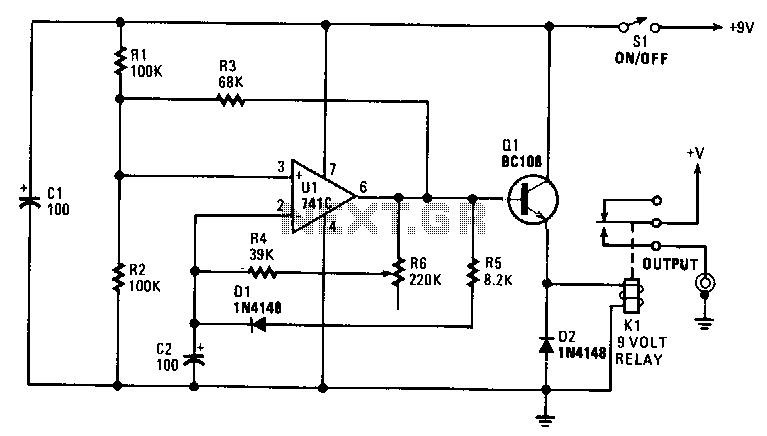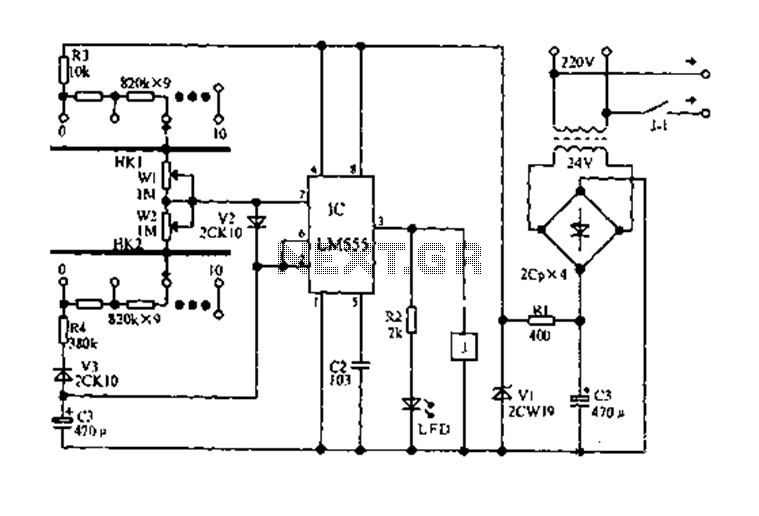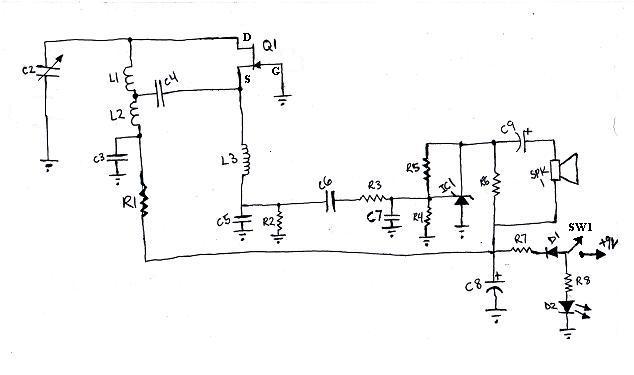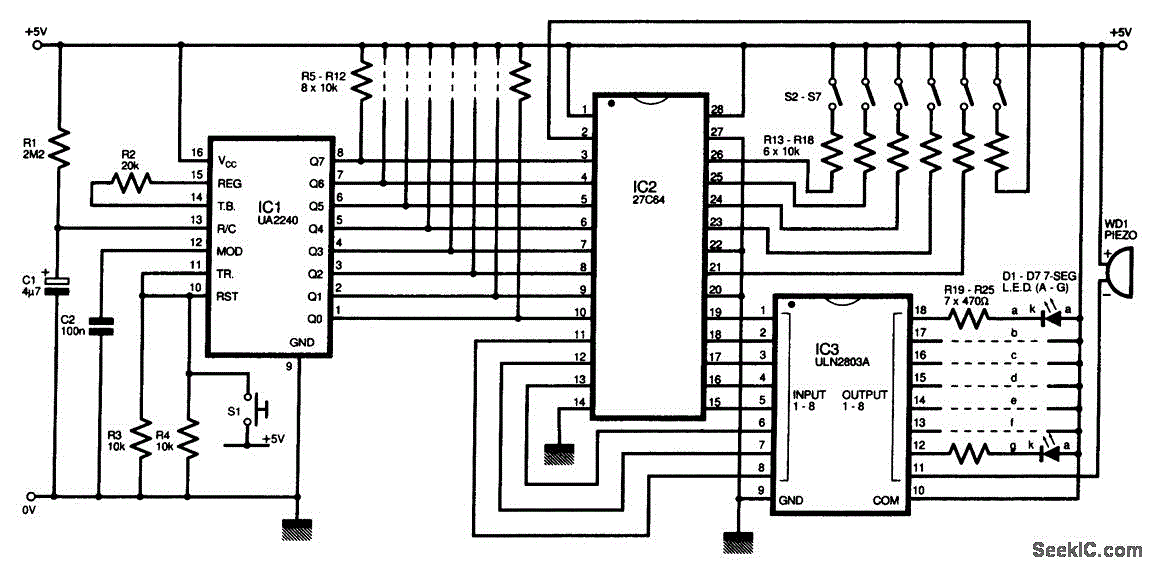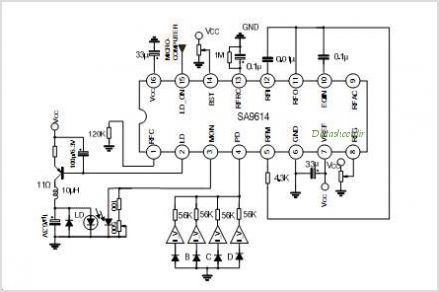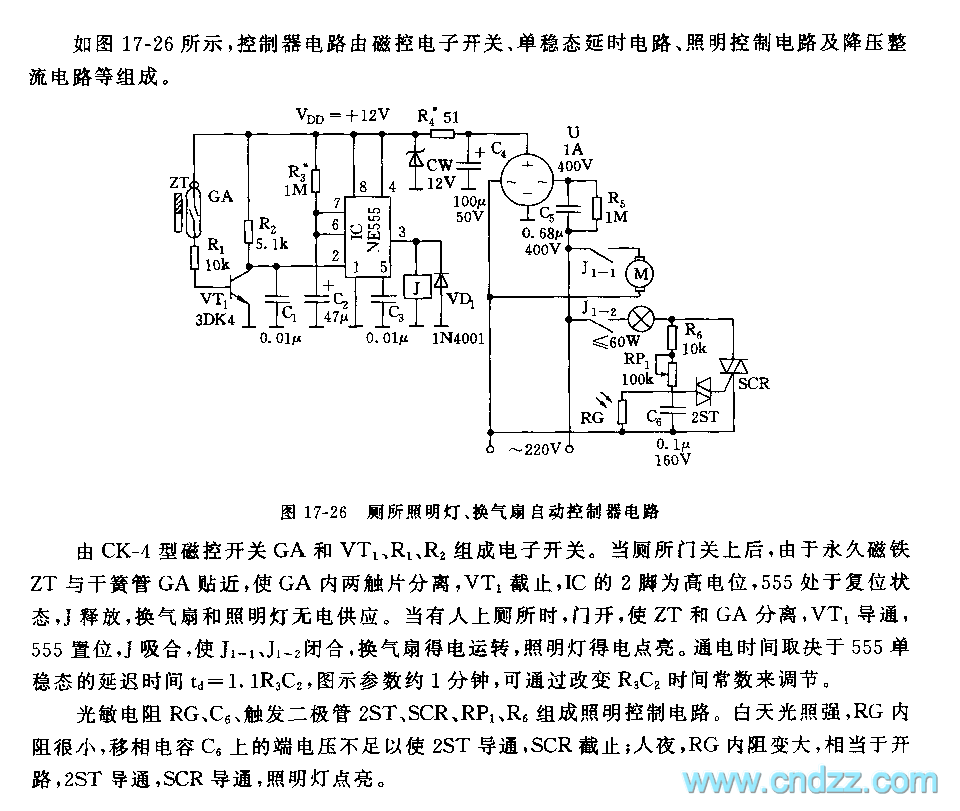
555 timer ic based simple servo
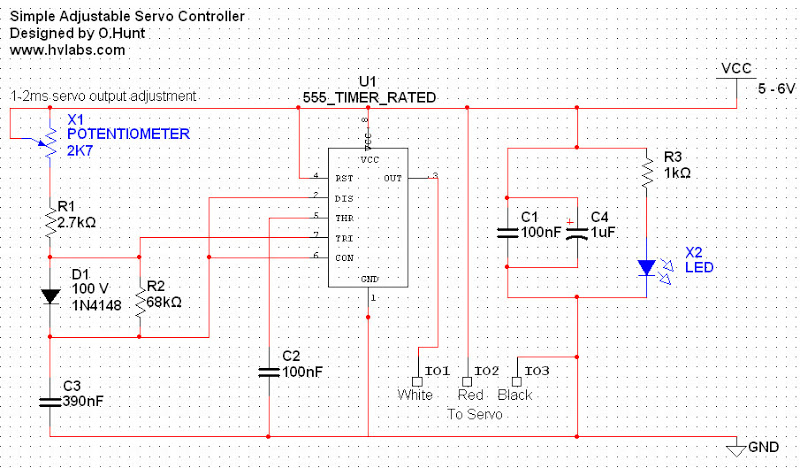
Servos are valuable components for various applications, including robotics, automation, and remote control tasks, such as steering model vehicles. They are relatively inexpensive and readily available; however, controlling them can be somewhat challenging as they require specific timing to adjust their output to desired positions. Most servos operate with a 50Hz refresh rate (20ms), where a pulse width between 1ms and 2ms is necessary to control the output, allowing movement between -45 degrees and +45 degrees. The circuit design is quite straightforward. It begins with a 555 timer integrated circuit (IC) to generate a pulse every 20ms, with a duty cycle between 5% and 10% (1-2ms). All components used are standard and easily sourced. Multiple servos can be driven with the same signal using a single circuit if they are to have the same output, or separate driver circuits can be created to control different servos with varying outputs. It is important to note that servos draw significant current when activated and while maintaining a position under load, typically around several amps. This should be considered when designing the power supply for the circuit.
The servo control circuit utilizes a 555 timer in astable mode to generate the required pulse-width modulation (PWM) signals. The 555 timer is configured with resistors and capacitors to establish the frequency and duty cycle. The output from the timer is connected to the control pin of the servo, which interprets the duration of the pulse to determine its position.
In practice, the circuit can be enhanced by incorporating additional components such as a potentiometer to allow for manual adjustment of the pulse width, thereby providing a means to control the servo position dynamically. Furthermore, a microcontroller can be integrated into the design for more complex control schemes, enabling the implementation of feedback systems or multiple servo control through programming.
When constructing the power supply for the servos, a regulated supply capable of delivering the required current is essential. A common approach is to use a switching power supply or a battery pack that can handle the peak current demands of the servos during operation. It is advisable to include decoupling capacitors near the servo power connections to mitigate voltage spikes and ensure stable operation.
In summary, the servo control circuit is a fundamental building block for various electronic projects, providing precise control over mechanical movements through simple yet effective PWM techniques. Proper design considerations regarding power supply and component selection will enhance the reliability and performance of the servo system.Servos became valuable products for any variety of plans, like robotics, automation or only remotely controlling some thing, for example model vehicle steering. They`re reasonably low-priced and also simple to have hold of, however controlling them can be a little challenging while they requrie specific moment to control the output to advance into
a preferred position. Almost all servos use a 50Hz refresh rate (20ms) for level a beat of among 1 and 2ms is required to control the output to advance among -45degrees and +45degrees. The circuit is quite self instructive. We start using a 555 timer IC to build the pulse each 20ms which has a responsibility cycle of among 5 and 10% (1-2ms).
All of the components employed are common components. You are able to drive several servos with the identical signal by using circuit to all or any have same output or create multiple driver circuits to control several servos to various outputs. Also be aware that servos require much current when commanding them also to maintain a location below load, this is around several amps!
And so make notice of the while creating your electrical power supply. 🔗 External reference
The servo control circuit utilizes a 555 timer in astable mode to generate the required pulse-width modulation (PWM) signals. The 555 timer is configured with resistors and capacitors to establish the frequency and duty cycle. The output from the timer is connected to the control pin of the servo, which interprets the duration of the pulse to determine its position.
In practice, the circuit can be enhanced by incorporating additional components such as a potentiometer to allow for manual adjustment of the pulse width, thereby providing a means to control the servo position dynamically. Furthermore, a microcontroller can be integrated into the design for more complex control schemes, enabling the implementation of feedback systems or multiple servo control through programming.
When constructing the power supply for the servos, a regulated supply capable of delivering the required current is essential. A common approach is to use a switching power supply or a battery pack that can handle the peak current demands of the servos during operation. It is advisable to include decoupling capacitors near the servo power connections to mitigate voltage spikes and ensure stable operation.
In summary, the servo control circuit is a fundamental building block for various electronic projects, providing precise control over mechanical movements through simple yet effective PWM techniques. Proper design considerations regarding power supply and component selection will enhance the reliability and performance of the servo system.Servos became valuable products for any variety of plans, like robotics, automation or only remotely controlling some thing, for example model vehicle steering. They`re reasonably low-priced and also simple to have hold of, however controlling them can be a little challenging while they requrie specific moment to control the output to advance into
a preferred position. Almost all servos use a 50Hz refresh rate (20ms) for level a beat of among 1 and 2ms is required to control the output to advance among -45degrees and +45degrees. The circuit is quite self instructive. We start using a 555 timer IC to build the pulse each 20ms which has a responsibility cycle of among 5 and 10% (1-2ms).
All of the components employed are common components. You are able to drive several servos with the identical signal by using circuit to all or any have same output or create multiple driver circuits to control several servos to various outputs. Also be aware that servos require much current when commanding them also to maintain a location below load, this is around several amps!
And so make notice of the while creating your electrical power supply. 🔗 External reference
